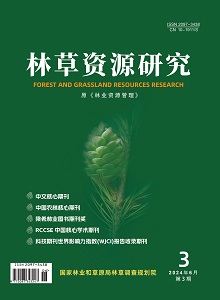Moisture is the key factor affecting the success or failure of desert vegetation restoration and afforestation in arid area.The experiment was carried out in mid-August 2020 at the experimental station of Tarim University in Alar City,Xinjiang Autonomous Region.Two-year-old seedlings of Populus euphratica,a key ecological species in the Tarim desert,were used as test materials,and a randomized block test was used in the field.This paper studied the effects of different dosages of polyaspartic acid water retention agent(PASA) on the growth,photosynthetic gas exchange and photosynthesis-light characteristics of Populus euphratica seedlings.The results showed that PASA significantly improved the leaf and soil water content of Populus euphratica,especially those treated with PASA 10g/plant were the highest,and the mean value of PASA 10g/plant were 6.11% and 483.54% higher than that of CK(without PASA) respectively.The diurnal variation of net photosynthetic rate(Pn),stomatal conductance(GS) and transpiration rate(Tr) showed an "M" variation,and instantaneous water use efficiency(WUEinst) showed an "L" variation,showing an obvious photosynthetic nap phenomenon.The peak values of Pn,GS and Tr were all higher than those of CK.Pn,Gs,Tr,WUEinst,apparent quantum efficiency(AQY),light saturation point(LSP),maximum net photosynthetic rate(Pnmax),total biomass(TB) and stomatal length(SAL) of Populus euphratica treated with PASA 10g/plant were 27.48%,50%,20.84%,18.99% 87.14%,88.90%,31.93%,230.54%,22.95% higher than those of CK respectively.The results showed that the photosynthetic efficiency,biomass and instantaneous water use efficiency of Populus euphratica were significantly improved,and the illumination ecological amplitude was expanded.Therefore,the recommended dosage of PASA for afforestation in arid area is 10g/plant.

